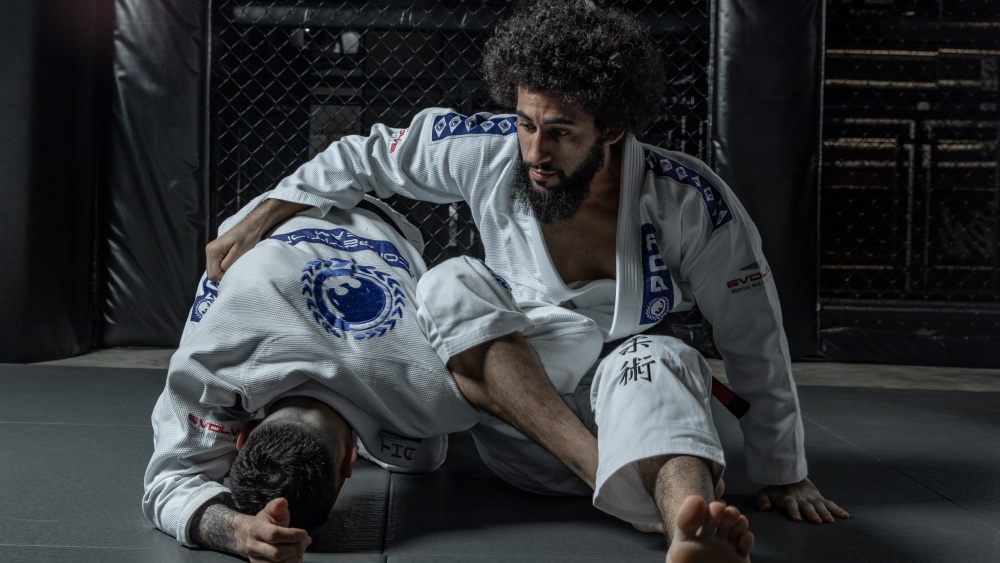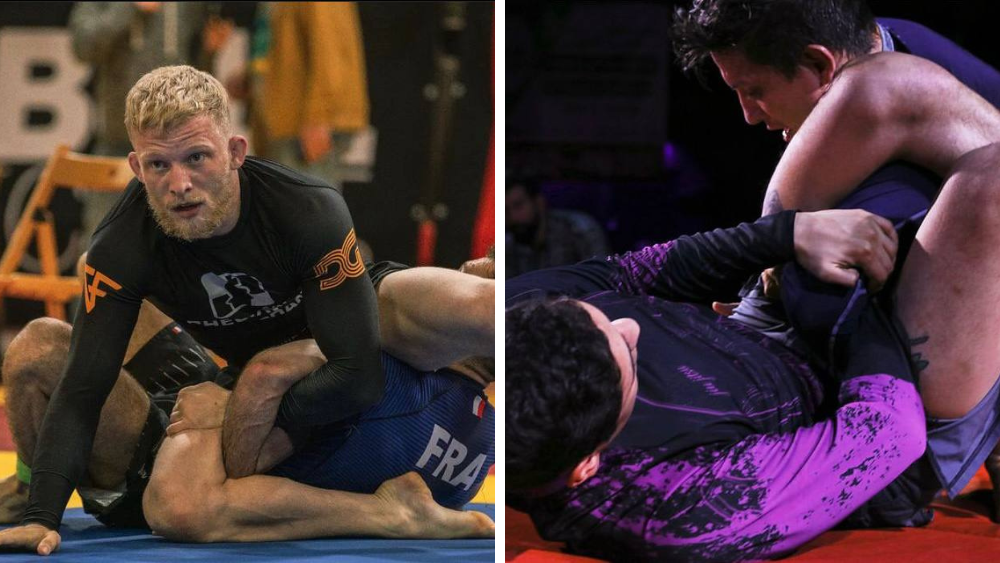Brazilian Jiu-Jitsu is a martial art that offers a vast array of techniques, each with its unique mechanics and applications. Among these techniques, shoulder locks hold a special place in most practitioners’ games due to their effectiveness and versatility. Two such shoulder locks that have gained popularity in recent years are the Tarikoplata and the Baratoplata. This article will delve into the intricacies of these two techniques, helping you understand their differences and how to incorporate them into your BJJ game.
Understanding Shoulder Locks In BJJ

Before we delve into the specifics of the Tarikoplata and Baratoplata, we must first understand what shoulder locks are and their role in grappling as a whole. Shoulder locks are a type of submission that apply pressure on the shoulder joint, causing pain and potentially leading to a tap. They are an important part of BJJ and are often used when an opponent defends against other submissions or leaves their arm vulnerable.
Shoulder locks, including guard, side control, and mount, can be applied from almost any position. They are versatile techniques that can be used both offensively and defensively, making them a valuable addition to any BJJ practitioner’s arsenal.
As mentioned earlier, the effectiveness of shoulder locks lies in their ability to exploit the vulnerability of the shoulder joint. The shoulder is one of the most mobile (but surprisingly fragile) parts of the human body, allowing for a wide range of motion. However, this mobility also makes it susceptible to manipulation and injury, which is what shoulder locks aim to manipulate.
The Tarikoplata: A Basic Overview
The Tarikoplata is a relatively new shoulder lock that was popularized by famous grappler Tarik Hopstock, a Norwegian Jiu-Jitsu black belt known for his innovative techniques. The Tarikoplata is a robust shoulder lock that can be set up from various positions, including guard and mount.
The Tarikoplata is typically set up when the practitioner controls the opponent’s arm and manages to bring their foot across the opponent’s face. The practitioner then reaches over their leg and grabs the opponent’s wrist, pulling it towards their own head. This creates a lever on the shoulder, which can be used to force a submission.
The Tarikoplata is a reminder of the creativity and innovation that BJJ encourages. It’s a move that requires a deep understanding of body mechanics and leverage, as well as the ability to think outside the box. Despite being a relatively new technique, the Tarikoplata has already made its mark in the BJJ community and continues to be explored and refined by practitioners worldwide.
The Baratoplata: A Basic Overview
The Baratoplata, named after Rafael “Barata” Freitas, a Brazilian BJJ black belt, is another innovative shoulder lock technique. The Baratoplata can be set up from different positions, including guard, side control, and mount, but it’s most commonly set up from the guard.
The Baratoplata is typically set up when the practitioner controls the opponent’s arm, similar to an armbar or triangle choke setup. The practitioner then brings their leg over the opponent’s arm and under their knee, creating a triangle configuration. The practitioner then grabs the opponent’s wrist, pulling it towards their head, creating pressure on the shoulder.
The Baratoplata is a unique technique showcasing BJJ’s depth and seemingly never-ending evolution. It’s a technique that requires precise control and positioning and must be drilled for hours as it is very intricate. Like the Tarikoplata, the Baratoplata is not yet super well-known, relatively speaking, but it has already proven its effectiveness in both training and competition.
Differences Between The Tarikoplata And Baratoplata
While the Tarikoplata and Baratoplata are shoulder locks, critical differences exist in their setup and execution.
First, let’s discuss the setups. The Tarikoplata is often set up from positions where the practitioner is on top, such as mount or side control, while the Baratoplata is commonly set up from the guard. However, both techniques can be set up from various positions, making them versatile.
Next is control. In the Tarikoplata, the practitioner controls the opponent’s arm with their legs and uses their arms to apply pressure on the shoulder. On the other hand, the Baratoplata involves trapping the opponent’s arm with a leg triangle and using the arms to apply pressure.
Next is generated pressure. Both techniques apply pressure on the shoulder, but they do so in slightly different ways. The Tarikoplata applies pressure by pulling the opponent’s arm towards the practitioner’s head, while the Baratoplata applies pressure by pushing the opponent’s arm away from the body.
Finally, for versatility, both the Tarikoplata and Baratoplata are versatile techniques that can be used in diverse situations. However, the Tarikoplata is often used as a follow-up to other submissions, particularly the kimura or armbar. In contrast, the Baratoplata is often used by itself and not as a follow-up to anything.
How To Include The Tarikoplata And Baratoplata Into Your Game
Both the Tarikoplata and Baratoplata are awesome techniques that can add layers to your BJJ game. They offer alternative options when traditional submissions are unavailable and can surprise opponents due to their unique mechanics. To incorporate these techniques into your game, start by drilling them in isolation. Understand the mechanics and the critical details that make them effective. Once you’re comfortable with the techniques, start incorporating them into your rolling sessions. Be open to different setups and transitions, and see how they fit into your game.
Remember, Jiu-Jitsu is a journey of continued learning. The more techniques you learn, the more options you have on the mat. Whether you’re a fan of shoulder locks or not, understanding the Tarikoplata and Baratoplata can only make you a more well-rounded grappler.
Conclusion
The Tarikoplata and Baratoplata are a testament to the ever-evolving nature of today’s grappling landscape. They are innovative techniques that have expanded the arsenal of shoulder locks available to practitioners. While they may seem complex initially, with everyday practice and application, they can become powerful tools in your BJJ game.
As always, remember that BJJ is not just about learning techniques. It’s about understanding the principles behind the techniques and applying them in different situations. So keep training, keep learning, and keep evolving. Have fun!
Book your complimentary trial class with our World Champions below!
If you have any other questions regarding Evolve MMA and the programs we offer, you can get in touch with our membership executives at the following locations:
Evolve MMA (Far East Square)
26 China Street
Far East Square #01-01
Singapore 049568
Phone: (65) 6536 4525
Evolve MMA (Orchard Central)
181 Orchard Road
#06-01 Orchard Central
Singapore 238896
Phone: (65) 6536 4556
Evolve MMA (KINEX)
11 Tanjong Katong Road
#02-52 KINEX
Singapore 437157
Phone: (65) 6288 2293
Evolve MMA (Clarke Quay Central)
6 Eu Tong Sen Street
#04-18 Clarke Quay Central
Singapore 059817
Phone: (65) 6226 2150
Evolve MMA (Star Vista)
1 Vista Exchange Green
#02-26A The Star Vista
Singapore 138617
Phone: (65) 6539 9590

















